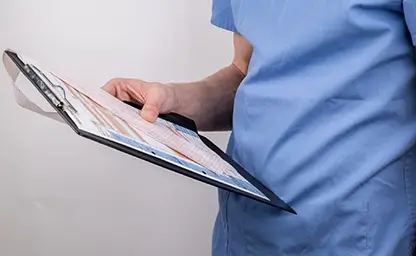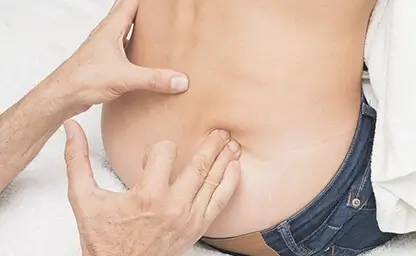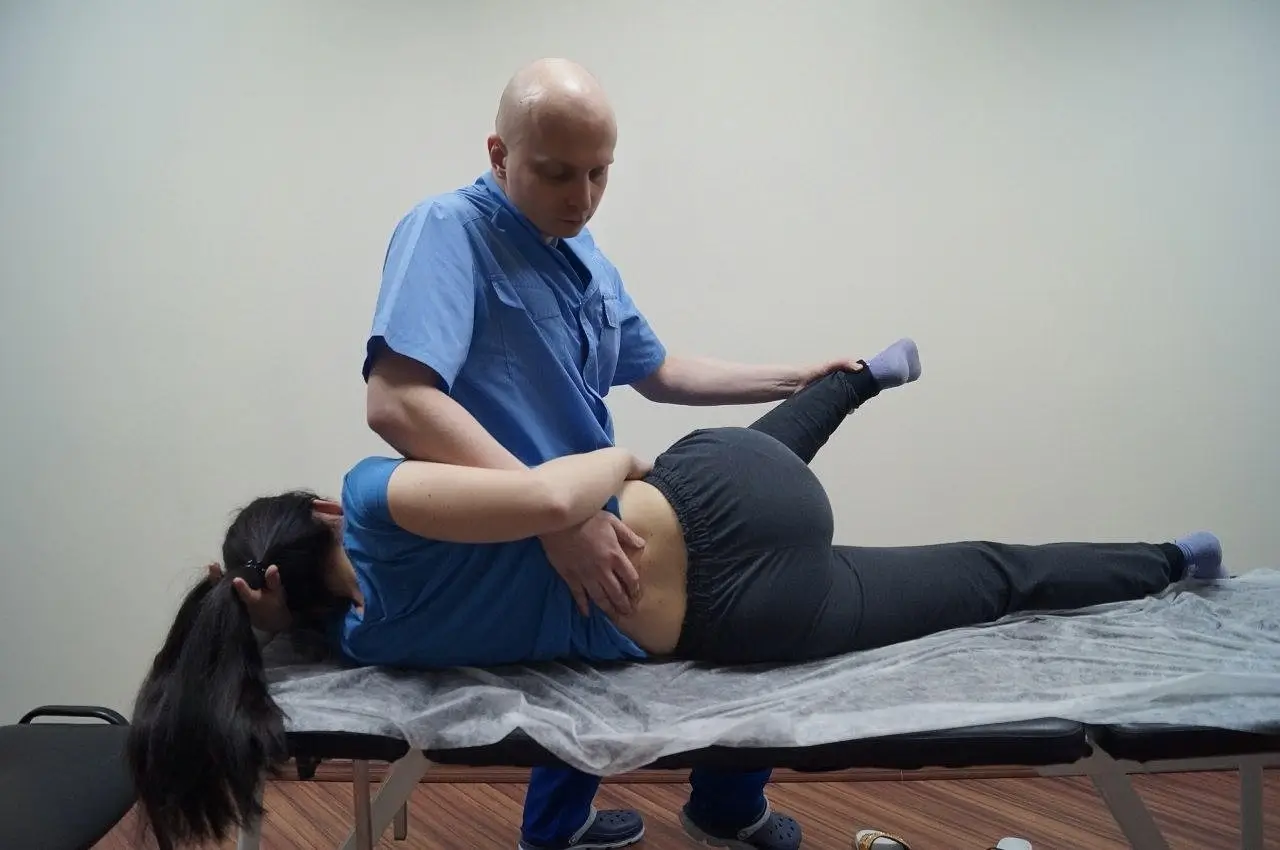

Toggle recoil technique
RECOIL
 The toggle recoil technique was created by French osteopaths and described in the collaborative work "Mechanical Osteopathic Communication" by Paul Chauffour and Eric Prat. The basic technique is quite simple and at the same time highly effective. It consists in pressing on some structure (vertebrae, ribs, joints) with a medium or small amount of force and then quickly stopping the force (rebound). This creates a micro-movement of the bone structure in question, resulting in relaxation of the muscles and ligaments associated with the structure.
The toggle recoil technique was created by French osteopaths and described in the collaborative work "Mechanical Osteopathic Communication" by Paul Chauffour and Eric Prat. The basic technique is quite simple and at the same time highly effective. It consists in pressing on some structure (vertebrae, ribs, joints) with a medium or small amount of force and then quickly stopping the force (rebound). This creates a micro-movement of the bone structure in question, resulting in relaxation of the muscles and ligaments associated with the structure.
This relaxation is usually followed by changes in muscle and ligament tone in neighboring structures. The chains of change can go quite far from the point of application of force. The basic technique is effective and always works, the degree of change is always individual.
While the method is undoubtedly effective, the test system is not simple. This is especially true of inhibitory balance tests. When the stresses are many and significant, comparing them can be difficult. The system for diagnosing and treating key dysfunctions is called "mechanical osteopathic link" and is described in the book of the same name. One of the main ideas of P. Chaoffour is not to "correct" individual displacements, but to see the person in the totality of all interrelationships. To do this, you need to work with the abdomen and the entire musculoskeletal system.
The toggle recoil adjustment is good, very interesting, and the way Paul Chaoffour works is simply mesmerizing. But it is necessary to realize that behind the external simplicity of performance are years of meticulous study of anatomy and biomechanics, as well as trial and error in practice. Therefore, it is not very suitable for independent use by the patient and remote consultations, there are much more optimized approaches for such purposes.
☛ Kinesiological testing and applied kinesiology
☛ Trigger point myotherapy massage.




